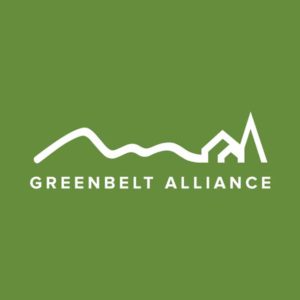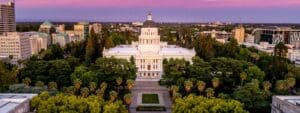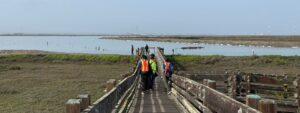Newark City Council to consider proposal to build 469 “executive houses” atop historic wetland area, entirely within FEMA flood zone, despite rising sea levels and vocal opposition from environmentalists and regulatory agencies
FOR IMMEDIATE RELEASE
Friday, November 8, 2019
Contact:
Zoe Siegel – Greenbelt Alliance – (510) 367-4464 – zsiegel@greenbelt.org
Jana Sokale – Citizens Committee to Complete the Refuge – (510) 229-7550 – janaslc@aol.com
Julia Foote – Sierra Club SF Bay Chapter – (510) 848-0800 ext. 304 – julia.foote@sierraclub.org
Newark, CA – On November 14th, the Newark City Council will vote on a development proposal to import 1.67 million cubic yards of fill (over 100,000 truckloads) and pave over a rare open space area on the South San Francisco Bay shoreline that has long been prized by scientists and wildlife managers for restoration and inclusion in the Don Edwards San Francisco Bay National Wildlife Refuge. Over a dozen environmental organizations are formally opposing this development proposal that will exacerbate climate change effects and impact habitat for threatened and endangered species.
The proposed “Sanctuary West Residential Project” would build 469 luxury units along the City of Newark’s shoreline on a 559-acre site called “Area 4” – undeveloped, diked baylands, containing both wetlands and valuable upland habitat, nestled between the Newark salt ponds, the Don Edwards San Francisco Bay National Wildlife Refuge, and the Union Pacific Railroad tracks. Entirely within a FEMA flood zone, already pumped annually to avoid flooding, and anticipated to be completely inundated by sea level rise, environmentalists call the project, in a joint letter to the Newark City Council, “the epitome of the type of development that should not move forward” in the region.
“The Bay Area is already experiencing the effects of sea level rise,” Amanda Brown-Stevens, CEO of the Greenbelt Alliance said. “Rather than put thousands of new residents – and hundreds of millions of dollars of new property – at risk of flooding, our region critically needs to protect our natural infrastructure, like wetlands, that can buffer our communities from rising sea levels. Area 4 is a rare opportunity to restore wetlands and wildlife habitat, and help our region become more climate resilient.”
Instead of development, the coalition urges the City of Newark to follow the overwhelming recommendations of the region’s wildlife scientists, climate adaptation experts and resource agencies such as the U.S. Fish and Wildlife Service and San Francisco Bay Regional Water Quality Control Board, who have encouraged Area 4 be protected and restored as habitat for Bay wildlife species and a natural buffer for Newark from sea level rise.
The coalition believes that we need to address our regional housing crisis and the global climate crises simultaneously. We need to build homes close to amenities and public transportation and away from critical wetlands that protect both residents and endangered species from the effects of sea level rise.
“Area 4 provides an incredibly rare and important mix of habitats that support an abundance of wildlife species,” said David Lewis, Executive Director of Save The Bay. “Paving over these diked baylands squanders a valuable opportunity to restore the health of the Bay.”
“From every angle, development in Area 4 is unwise for Newark and unsustainable for the region,” said Newark resident and leader with the volunteer-group Citizens Committee to Complete the Refuge, Jana Sokale. “Destroying wildlife habitat to put people in an area of historic tidal wetlands identified as a FEMA flood-zone, that is further at risk from sea level rise, is ultimately costly for all of us.”
“Rather than sprawl into restorable wetlands to build million-dollar ‘executive houses,’ we urge Newark to pursue true smart growth: building affordable housing within its existing urban footprint, near transit, jobs and shops,” said Julia Foote, Community Outreach Coordinator with the Sierra Club SF Bay Chapter. “This proposed development only adds to the cumulative loss of wildlife habitat and escalates the climate crisis.”
Environmental organizations opposed to development in Newark Area 4 include: Alameda Creek Alliance, California Native Plant Society – East Bay Chapter, Center for Biological Diversity, Citizens Committee to Complete the Refuge, Defenders of Wildlife, Greenbelt Alliance, Mission Peak Conservancy, Ohlone Audubon Society, San Francisco Baykeeper, Santa Clara Valley Audubon Society, Sierra Club SF Bay Chapter, Save The Bay, and the Tri-City Ecology Center.
###
About Greenbelt Alliance:
Greenbelt Alliance addresses a single challenge: how the Bay Area handles growth. We shape the rules that govern growth to protect the region’s open spaces and to ensure everyone can live in a thriving neighborhood. For nearly 60 years, Greenbelt Alliance has shaped the amazing places of the Bay Area. greenbelt.org
About Citizens Committee to Complete the Refuge:
The Citizens Committee to Complete the Refuge is an all-volunteer organization that for over 50 years has championed the creation, expansion and protection of San Francisco Bay’s National Wildlife Refuge – the first urban national wildlife refuge in the country. Since leading successful efforts to create the Refuge in 1974, and expand it in 1988, the organization has tirelessly fought to protect the Refuge and potential Refuge lands and promote the recovery of the diverse ecosystems that make San Francisco Bay the ecological heart of our region.www.bayrefuge.org
About Save The Bay:
Save The Bay campaigns for a healthy Bay and a sustainable Bay Area in this era of climate change and growing population. We mobilize Bay Area residents to protect and restore the Bay for future generations, both as advocates in their community and volunteers on the shoreline. We work with scientists and policymakers to protect the Bay as our region’s most important natural resource—essential to our environment, economy, and quality of life. www.savesfbay.org
About Sierra Club SF Bay Chapter:
The Sierra Club is America’s largest and most influential grassroots environmental organization, with more than 3.5 million members and supporters. In addition to protecting every person’s right to get outdoors and access the healing power of nature, the Sierra Club works to promote clean energy, safeguard the health of our communities, protect wildlife, and preserve our remaining wild places through grassroots activism, public education, lobbying, and legal action. For more information, visit www.sierraclub.org





